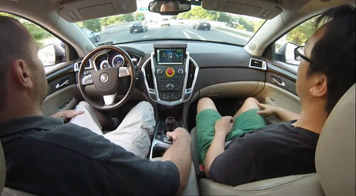 NSF CPS Report
NSF CPS Report

Just as the Internet transformed the way people interact with information, cyber-physical systems are transforming the way people interact with engineered systems. Cyber-physical systems integrate sensing, computation, control and networking into physical objects and infrastructure, connecting them to the Internet and to each other. NSF is a leader in supporting advances in the fundamental knowledge and tools to make cyber-physical systems a reality. These advances hold the potential to reshape our world with more responsive, precise, reliable and efficient systems, enabling a revolution of "smart" devices and systems – from smart cars to smart grids, collectively giving rise to smart cities -- that can address some of the most pressing national priorities.
Transportation and Energy

In the future, we'll travel in driverless cars that communicate securely with each other on smart roads and in planes that coordinate to reduce delays. Drones will check infrastructure for damage and deliver Wi-Fi access to disaster zones. Homes and offices will be powered by a smart grid that is user-aware and will use sensors to analyze the environment and optimize lighting, heating and cooling.
Health Care and Medicine

Cyber-physical systems are poised to transform the delivery of health care – enabling smart medical treatments and services. Sensors in the home will detect changing health conditions; new operating systems will make personalized medical devices interoperable; and robotic surgery and bionic limbs will help heal and restore movement to the injured and disabled and one day even augment human abilities.
Environment and Sustainability

Cyber-physical systems are increasingly used to promote sustainability. Cyber-physical systems are helping firefighters detect and deter fires, improving agricultural practices and enabling scientists to mitigate underwater oil spills. Advances in cyber-physical systems will enable capability, adaptability, scalability, resiliency, safety, security and usability that will far exceed the simple embedded systems of today.


